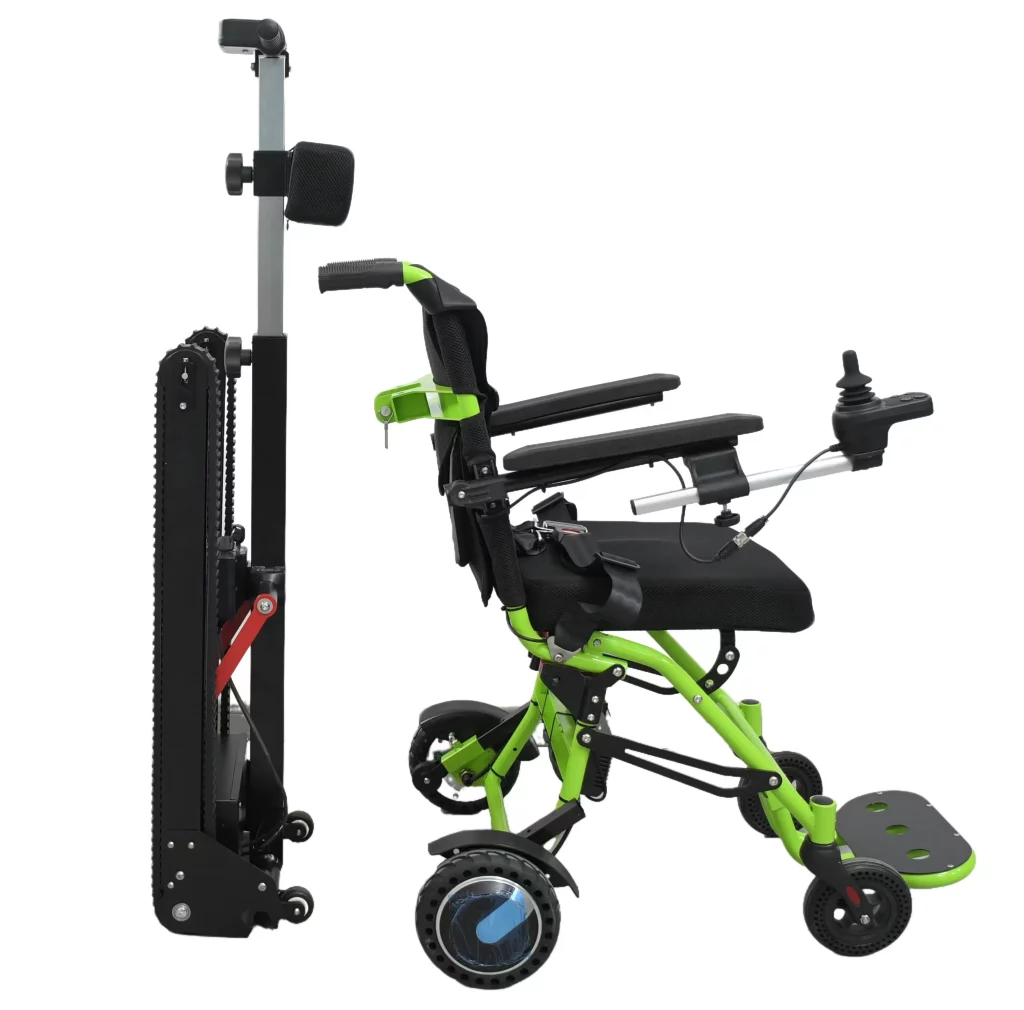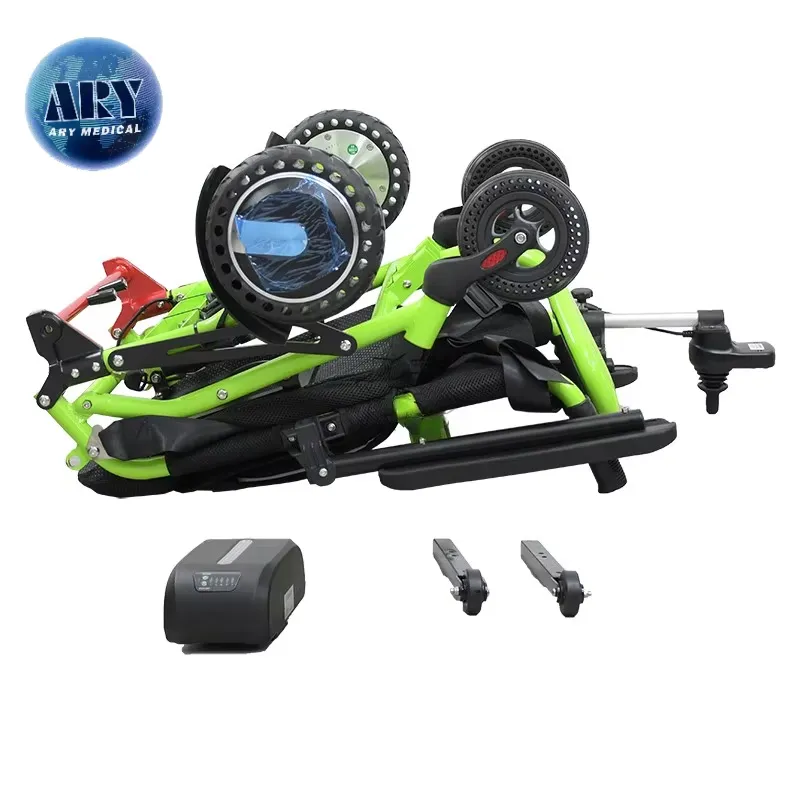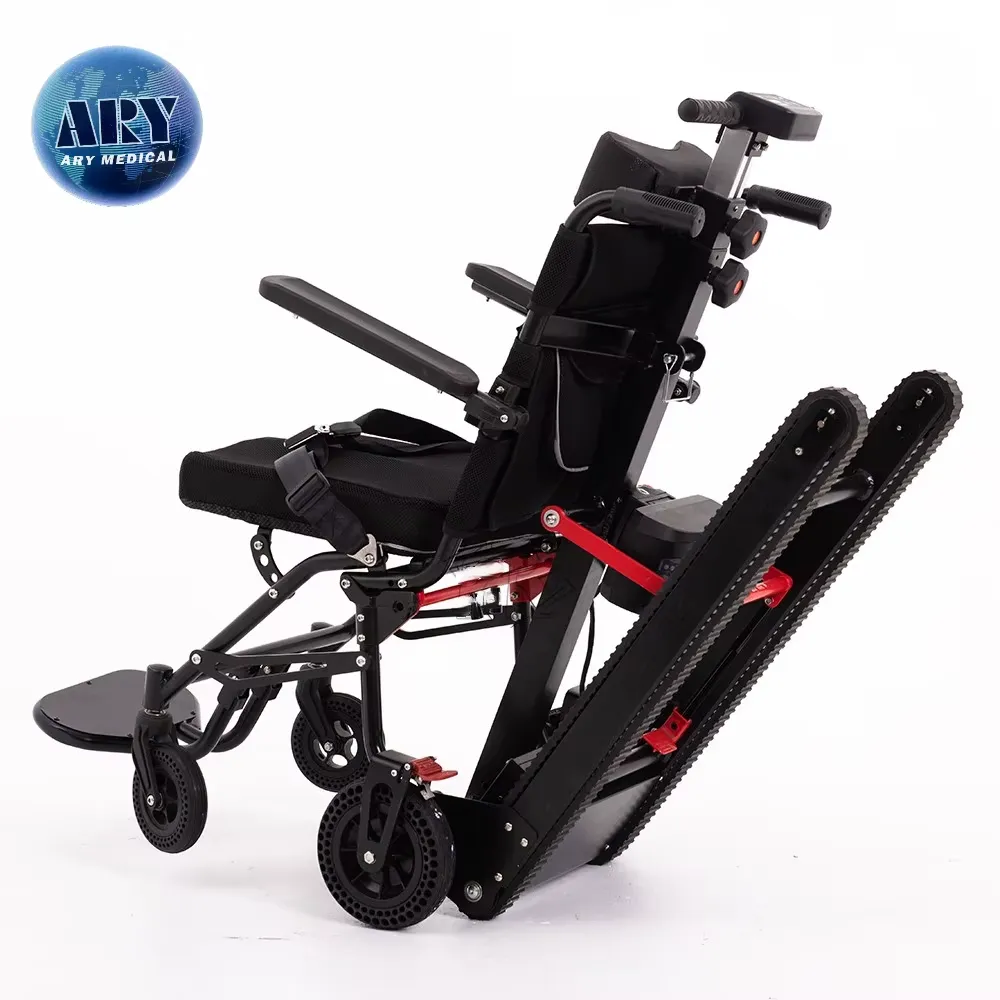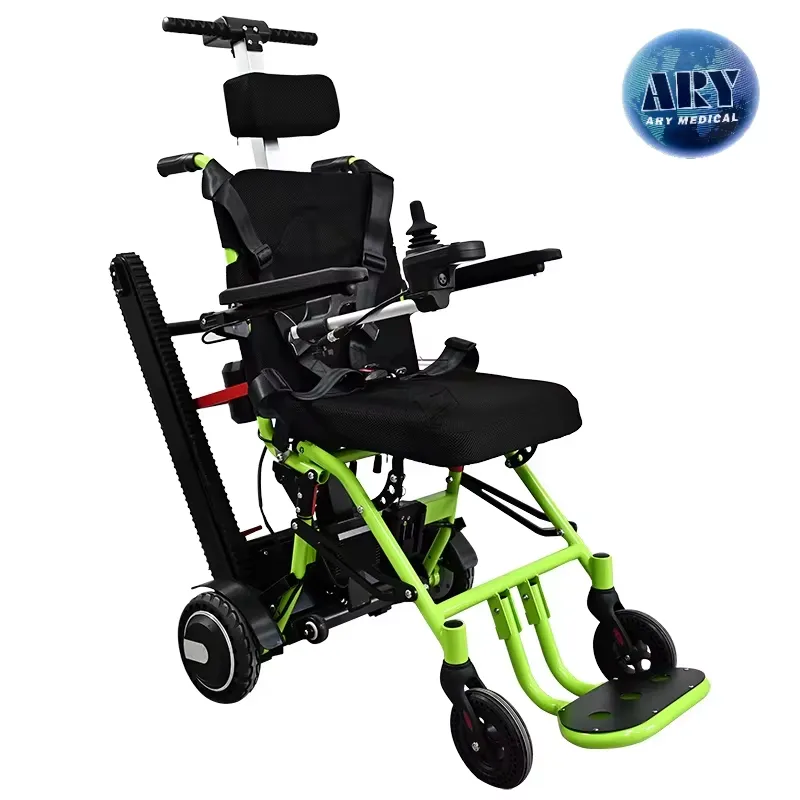For individuals with mobility challenges living in multi-level homes, stairs represent one of the most significant barriers to independence and quality of life. Traditional wheelchairs are completely incapable of navigating steps, often forcing difficult choices between expensive home modifications, relocation, or limited access to portions of one’s own home. The best stair climbing wheelchairs for home use represent revolutionary solutions to this challenge, combining innovative engineering with practical functionality to create truly accessible multi-level living. These specialized mobility devices enable users to navigate stairs safely and independently, preserving both freedom of movement and the ability to remain in cherished homes.

Understanding Stair Climbing Wheelchairs
Stair climbing wheelchairs are specialized mobility devices engineered specifically to overcome the vertical barriers presented by residential staircases. Unlike standard wheelchairs designed only for flat surfaces, these advanced chairs incorporate mechanisms that enable safe, controlled ascent and descent of stairs while maintaining stability and user comfort.
The Evolution of Home Stair Accessibility
Home stair accessibility solutions have undergone remarkable evolution over recent decades. Traditional approaches focused primarily on home modifications—installing stairlifts, elevators, or ramps—all requiring significant structural changes, expense, and often compromising home aesthetics. For many homeowners, particularly those in historic or architecturally unique properties, these modifications were impractical or undesirable.
The development of stair climbing wheelchairs represents a significant breakthrough in home accessibility. These devices emerged from recognizing that mobility equipment could adapt to existing architecture rather than requiring architecture to adapt to mobility limitations—a fundamental shift in approach that preserves both independence and home integrity.
How Stair Climbing Wheelchairs Work
Stair climbing wheelchairs operate on several different technological principles, each with distinct advantages for home use:
- Track-Based Systems: Utilizing deployable rubber tracks that grip stair edges and provide controlled descent and ascent through a balanced center of gravity and powerful motors.
- Wheel Cluster Technology: Employing rotating wheel clusters that continuously maintain multiple points of contact with stairs, creating stable triangular support as the chair moves between steps.
- Articulated Wheel Systems: Using articulating wheels that can change configuration to conform to stair dimensions while maintaining stability throughout the climbing process.
- Hybrid Designs: Combining elements of different climbing technologies to optimize performance for specific stair configurations commonly found in residential settings.
The Ary Medical stair climbing wheelchair exemplifies these principles with its innovative design that seamlessly transitions between flat surface operation and stair climbing mode. The system automatically adjusts to different stair dimensions and maintains perfect balance throughout the climbing process, providing users with a sense of security often lacking in other mobility solutions.

Key Features of the Best Stair Climbing Wheelchairs for Home Use
The best stair climbing wheelchairs for home use offer numerous advantages that make them indispensable for individuals living in multi-level residences. These specialized mobility aids transform what was once impossible into an everyday reality for users with mobility challenges.
Safe and Reliable Stair Navigation
The primary function of stair climbing wheelchairs is their ability to safely navigate residential staircases:
- Stable Climbing Mechanics: Engineering that maintains center of gravity within the base of support throughout the climbing process.
- Automatic Angle Adjustment: Systems that continuously adapt to stair dimensions, maintaining optimal user position regardless of stair design.
- Multiple Safety Redundancies: Backup systems that prevent accidents even if primary mechanisms experience issues.
- Speed Control: Carefully calibrated movement rates that balance efficiency with absolute safety.
- Emergency Stop Functions: Immediate halt capabilities accessible to both users and assistants if needed.
Ary Medical’s stair climbing wheelchair incorporates a proprietary stability control system that monitors position 100 times per second, making micro-adjustments to ensure the user remains perfectly balanced even on irregular or worn stairways common in older homes.
Home-Friendly Design Considerations
Quality stair climbing wheelchairs incorporate features specifically designed for residential environments:
- Compact Dimensions: Width and length appropriate for standard residential doorways, hallways, and room navigation.
- Floor-Friendly Operation: Wheels and tracks designed to protect hardwood, tile, and carpet surfaces from damage during normal use.
- Noise Reduction: Engineering that minimizes operational sound to maintain peaceful home environments.
- Aesthetic Integration: Design elements that blend more seamlessly with home environments rather than presenting an institutional appearance.
- Furniture Compatibility: Height and approach dimensions that work with standard residential furniture.
These home-oriented design features ensure the wheelchair integrates into daily life without requiring significant adaptations to the living environment.
User Independence and Control
The best stair climbing wheelchairs prioritize user autonomy in multi-level homes:
- Intuitive Controls: Simple, logical control systems that can be mastered without extensive technical knowledge.
- Customizable Operation: Adjustable settings that can be personalized to user preferences and specific home configurations.
- Transition Automation: Seamless switching between flat surface and stair climbing modes with minimal user intervention.
- Visual Feedback Systems: Clear indicators of mode, battery status, and operational readiness.
- Accessible Emergency Controls: Critical functions positioned for easy access regardless of user’s physical limitations.
These independence-enhancing features transform the user experience from one of dependence on others for level changes to self-directed movement throughout the entire home.
Practical Functionality for Daily Living
Beyond stair climbing, quality models incorporate features that enhance everyday usability:
- Battery Capacity: Sufficient power for multiple stair climbs and all-day use on flat surfaces between charges.
- Indoor Maneuverability: Tight turning radius and responsive controls for navigating typical home layouts.
- Comfort for Extended Use: Seating designed for the primary user’s specific needs and daily duration of use.
- Transfer-Friendly Design: Features that facilitate safe transfers between the wheelchair and beds, showers, or other furniture.
- Adaptability to Routines: Functionality that accommodates the user’s established daily patterns rather than forcing lifestyle changes.
Ary Medical’s home-focused stair climbing wheelchair includes programmable memory settings that can be optimized for specific staircases within the home, allowing for one-touch operation customized to each unique stairway.

Types of Stair Climbing Wheelchairs for Home Use
Stair climbing wheelchairs come in several distinct categories, each designed to meet different home environments and user needs. Understanding these categories helps in selecting the option that best matches specific residential requirements.
Attendant-Operated Track Systems
These systems require a caregiver to assist with stair navigation:
- Simplicity: Fewer electronic components mean less maintenance and fewer potential failure points.
- Lower Cost: Generally more affordable than fully automated systems.
- Lighter Weight: Typically lighter and easier to maneuver when not in climbing mode.
- Versatility: Often capable of handling a wider variety of stair configurations, including spiral or highly irregular staircases.
Attendant-operated systems are ideal for homes where a capable caregiver is consistently available and budget considerations are significant.
Self-Operated Climbing Systems
Designed for users who wish to navigate stairs independently:
- Full Autonomy: Allows users to move between floors without assistance.
- Advanced Controls: Sophisticated yet intuitive control systems that manage the entire climbing process.
- Enhanced Safety Features: Additional redundant safety systems to protect unaccompanied users.
- User-Positioned Controls: All essential functions accessible from the seated position.
Self-operated systems provide maximum independence for users with sufficient cognitive and physical abilities to manage the control systems safely.
Hybrid Indoor/Outdoor Climbers
Systems designed to handle both home stairs and outdoor steps:
- Weather Resistance: Components designed to withstand exposure to various weather conditions.
- Terrain Flexibility: Capability to handle both indoor stairs and typical outdoor steps found at home entrances.
- Robust Construction: More durable build quality to manage the additional stresses of outdoor use.
- Transitional Design: Features that facilitate moving between indoor and outdoor environments.
Hybrid models are excellent for active users who want a single solution for navigating their entire property, including garden steps, porch stairs, and interior staircases.
Specialized Narrow Stairway Models
Engineered specifically for homes with unusually narrow or steep staircases:
- Minimal Width: Reduced dimensions that can navigate historic homes or urban townhouses with narrow stairways.
- Enhanced Climbing Angle: Capability to safely ascend and descend steeper stairs common in older homes.
- Specialized Stability Systems: Modified balance mechanisms optimized for challenging stair configurations.
- Custom Adaptability: Features that can be tailored to specific unusual stairway dimensions.
These specialized models address the particular challenges of historic homes, split-level designs, or architecturally unique properties where standard dimensions don’t apply.
Selecting the Right Stair Climbing Wheelchair for Your Home
Choosing the appropriate stair climbing wheelchair requires careful consideration of several factors to ensure it meets the specific needs of the user and the architectural characteristics of their home.
Home-Specific Considerations
The right stair climbing wheelchair should be selected based on the unique aspects of your residence:
- Stair Dimensions: Measure width, depth, rise, and total run of all staircases the chair will navigate.
- Stair Construction: Consider material (wood, concrete, carpet), condition, and any unusual features like curved sections or landings.
- Doorway Widths: Verify that the chair can pass through all doorways necessary to access staircases.
- Floor Surfaces: Identify all floor types the chair will traverse, ensuring compatibility with materials like hardwood, tile, or thick carpet.
- Charging Locations: Determine convenient and accessible locations for overnight charging that don’t create tripping hazards.
Ary Medical offers a comprehensive home assessment service where specialists measure and evaluate all relevant aspects of your residence to recommend the most appropriate stair climbing wheelchair configuration.
User-Specific Factors
The user’s unique needs should significantly influence wheelchair selection:
- Weight and Dimensions: Ensure the wheelchair can safely support the user while maintaining its climbing capabilities.
- Physical Abilities: Consider whether the user has the strength, range of motion, and dexterity to operate the chosen control system.
- Cognitive Status: Evaluate whether the user can understand and safely manage the climbing process, particularly for self-operated models.
- Transfer Requirements: Assess how the user will transfer into and out of the chair, considering seat height and armrest design.
- Daily Usage Patterns: Map the user’s typical daily movements between floors to ensure the selected model accommodates their lifestyle.
For users with progressive conditions, consulting with a physical therapist or occupational therapist can help identify features that will accommodate changing needs over time.
Practical Considerations
Beyond home architecture and user needs, practical aspects of ownership should be evaluated:
- Maintenance Requirements: Research the maintenance schedule, complexity, and cost for different models.
- Battery Life and Charging: Consider how the battery capacity aligns with daily usage patterns and whether rapid charging is available.
- Service Availability: Verify that qualified service technicians are available in your area for the selected model.
- Warranty Coverage: Compare warranty terms, particularly for critical climbing components and batteries.
- Future Adaptability: Assess whether the chair can be modified if user needs or home configuration changes.
Balancing these practical considerations with performance requirements ensures selecting a stair climbing wheelchair that will provide reliable service throughout its expected lifespan.
Usage Tips and Best Practices
Maximizing the benefits of a stair climbing wheelchair requires proper usage techniques and preparation. Following these best practices ensures a safe and satisfying experience for both users and caregivers.
Initial Training and Familiarization
Proper introduction to a new stair climbing wheelchair significantly enhances the experience:
- Professional Instruction: Work with the manufacturer’s representative or a trained therapist for initial training sessions.
- Gradual Progression: Begin with simple, straight staircases before attempting more complex configurations.
- Observer Practice: Have a spotter present during initial solo attempts, even with fully automated systems.
- Emergency Procedure Rehearsal: Practice emergency stop procedures and manual override operations before regular use.
- Confidence Building: Develop comfort with flat surface operation before introducing stair climbing functions.
Many users benefit from recording their training sessions for later reference, creating a personalized refresher resource for infrequently used functions.
Daily Operation Tips
Effective daily usage techniques can significantly improve the stair climbing wheelchair experience:
- Pre-Climb Assessment: Quickly scan stairs for any new obstacles or conditions before beginning ascent or descent.
- Consistent Positioning: Approach stairs at the recommended angle and position for your specific model.
- Smooth Control Inputs: Use gentle, deliberate control movements rather than abrupt or jerky inputs.
- Regular Battery Management: Develop a consistent charging routine that ensures adequate power for daily needs.
- Weather Adaptations: Take extra precautions when navigating stairs that might be affected by weather conditions, such as exterior steps during rain.
Ary Medical provides users with a daily operation checklist specifically designed for home environments, helping establish safe routines that become second nature.
Maintenance for Reliability
Proper maintenance extends the life of a stair climbing wheelchair and ensures continued safe operation:
- Regular Inspection: Check critical components according to the manufacturer’s rec

